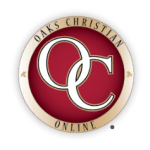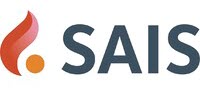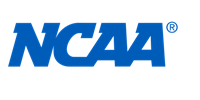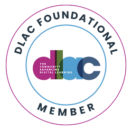Every educational program has areas and approaches they are particularly proud of–which is part of what makes the abundance of options available for students today so wonderful. At Oaks, on our online and physical campus, our junior level English course is one of those things we’re particularly enthusiastic to offer. With a strong emphasis on CEW (claim, evidence, and warrant) and ideology (i.e. theology, teleology, soteriology, sociology, anthropology, etc) this course gives students an opportunity to consider two large questions:
What makes a good argument?
How does American literature reveal and create American ideology?
This course has gone through various iterations and reconsiderations, but this year we’ve run the online version of Argumentation and American Ideology (AAI) with some more significant updates. To share this exciting news with you, we’ve invited our three curriculum experts who collaborated on the update to tell us about this journey. Here they are:

Haley Thomas is in her seventh year at Oaks Christian Online as an English instructor. She has taught nearly every English class offered through Oaks Christian Online, and currently teaches upper division English courses including Argumentation and American Ideology and AP English Literature. She has also aided in curriculum development and mentorship in the English department. She holds a bachelor’s degree and a Master’s in English.
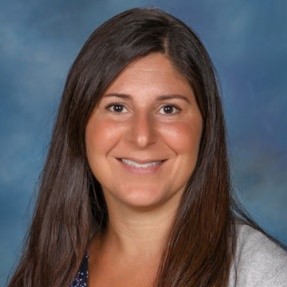
Lauren Travis is in her fifth year at Oaks Christian Online as the Dean of Instruction, overseeing curriculum development and our online faculty. As part of the administrative team, she works to help our teachers meet the needs of our full-time online students and various students from physical campuses, like our own Oaks Christian school physical campus. In curriculum, Lauren works with subject matter experts and colleagues from campus to continuously evaluate outcomes and objectives in meeting the goals of the Oaks Christian Portrait of a Graduate. She holds a bachelor’s degree in English and Bible and a Master’s in English Literature.

Samantha Farinacci is in her eleventh year at Oaks Christian online and serves currently as the school chaplain and specializes in theological engagement in curriculum development and offers reflections and guidance for the faculty in the area of Christian education. She also teaches upper division Bible & Spiritual Life courses as well as the Jesus in Middle School class, and once in a while teaches in the English department. She holds a bachelor’s degree in English and a Master’s in Theology.
Lauren, what are the major learning objectives for this course—what is this course all about? And then, Haley, as you teach this course, what are some of the things you’re hoping students take away from it?
Lauren: Our course is guided by the incredible foundational program of our physical campus and the goals of the English department. As a uniquely created English program for Oaks Christian School, we want to make sure our online version of the course meets the same course outcomes as campus. Those course outcomes are to explore major American writers, works, and time periods; place unfamiliar American works within the stylistic and ideological movements they best represent; identify and write logically valid arguments; evaluate others’ arguments for logical validity and stylistic patterns; express both academic and personal thoughts in writing; present information to a group clearly and comfortably; and increase a college-bound vocabulary. Some of the incredible ways students do this work is through exploring literature through the lens of the eight ideologies, writing in the Toulmin method of argument, and presenting their findings in oratory speeches throughout the course. With our weekly synchronous live class, students explore these topics in Socratic conversations. While delivery and instructional method is of course different, those course outcomes and learning objectives remain the same. We want students to be able to track the progression of ideologies across the centuries through literary exploration.
Haley: This course is one that truly goes beyond the classroom, and my ultimate hope is that students realize the transferability of the skills that have perfected here—how close reading, critical thinking, careful writing, and delineating ideology are practical skills that any thoughtful person should use in their daily life. As an English teacher, I always hope as well that one piece we read will stay with the students for years to come. Whether it be a character, a line, or a moment, I want the literature we read in this course to have a lasting impact on the student, serving as a talisman to just how significant the written word can be.
Haley, can you tell us some of the struggles online students have had with this course over the years and how this new version brings more learning opportunities to help with some of those pain points?
This course has a fantastic structure in its major literary eras, readings, and assignments, but what was missing was a guiding hand to lead students from one era to the other, from one idea to the other. At times, there was a lack of introduction to a new idea or a new piece, leaving students jumping from one author to another without a proper transition. The framework was exceptional, but some intricate details were lacking.
This new version has filled the gaps between the content, including a narrative voice that speaks to students and guides them through the entire course. This includes explaining more of the history behind the text, helping train students on how to complete a designated task, or simply creating a conversational voice that emulates the teacher-student connection. To further connect with students, we have also added additional reflection discussions that challenge students to address their own thoughts regarding the work at hand, encouraging them to make connections to the real world and their own life. These reader-response based discussions challenge students to fully wrestle with what they have just read before moving forward, a critical activity that emulates the classroom environment.
Lauren, one of the areas this course focuses on is cultural responsiveness. Can you tell us what that means and how it is explored in this version of AAI?
As a program, we’ve taken the last year or so to examine our curriculum for places where we already reflect the cultures of our student population, the people of our country, and the world and opportunities to do that more often. In addition, ongoing work continues to evaluate how our curriculum might inadvertently confirm stereotypes or bias. This became particularly important for us in a course titled “Argumentation and American Ideology”. We wanted to ensure that chosen texts allowed students to explore excellent American literature that not only exemplified the particular eras in line with our course outcomes but also represented more of America with new (to our course) voices. Literary canon continues to evolve and change as researchers, writers, and educators “discover” authors that have not typically filled collections and anthologies. In this course, that looked like adding the poetry of Phyllis Wheatley, writings of Frederick Douglass and Charlotte Perkins Gilman, and poetry, memoirs, and fiction from Black, AAPI, Latinx, and Native American authors in the modern and postmodern era. We wanted to make sure that our curated texts and authors did not inadvertently communicate that the best representations of American literature came from only one type of American. As Samantha wrote last year in a blog titled “Sharing Resources on Race” around Black History Month, “[S]ometimes Black history, Black literature, and Black experiences become segmented into units or even separate courses which can unintentionally mislead students into thinking that it is a tangent away from the main American narrative.” Our work in updating our course allowed us to weave literature from various cultures in America into its fabric more organically and seamlessly. We even provided some opportunities for modern texts to “talk back” to historical texts to deepen learning about ideologies and how those have changed over time.
Samantha, can you describe for us some of the theological engagement in the course?
Theological engagement is a large undertaking in any course, but in this case, I want students to think about where God’s good news—both corrective and affirmative—has appeared in American writing, thought, and speech. Throughout the class there are opportunities to examine the necessity of dialogical and communal witness in the pursuit of God’s love, truth, and justice for this place. Often times this looked like putting several texts in conversation with each other and then letting students make decisions about where the light is shining—even if the light is shining in the darkness.
There are a lot of troubling, challenging, beautiful, and piercing pieces in our shared history in the United States. Because of this, it’s important for students to have the chance to see that God’s movement in these texts includes but is not limited to ‘happy’ pieces but can inform and transcend the full span of human experience as it has appeared in this place. Specifically, I wanted students to key into the prophetic voice of certain American writers in order to see that sometimes those hard to hear voices are the ones most vital in bringing about positive change in American ideology. I hope students walk away with a more fine-tuned understanding of how lived theology has and continues to shape the concept of America and our neighbors’ experience of it.
Finally, I will add that in the biblical narrative we see God tirelessly directing the camera and pointing the microphone at poor and vulnerable populations. Christ’s effort to attend to the voiceless emboldens their stories, revealing them as integral to the full cloud of witnesses that surround us (Heb. 12:1). As a Christian educator I take this effort God makes pretty seriously. To that end, I also wanted to use theological engagement to bring attention to some of the more shied American voices in the American narrative.
Haley, as you’ve taught the new version of this course this year, how has it been going and what have you noticed so far?
The new version has been working well with the students this year. Students have benefited from the added introductory content reminding them of base English skills like close reading, annotating, and CEW writing. This has prevented confusion and helped students approach their assignments with a clear understanding of the expectations. I have also seen an added responsibility from the students this year. As the course has more rhythm and connectivity, I believe students have had an easier time grasping the content which allows them to form more of their own ideas and opinions. Simply stated, because the foundations of the course are stronger, it has allowed students to move beyond the course and reckon with the extensive ideas and questions that our authors present us.
Additionally, the newly added authors that reflect a wider reality of American literature and experience have been praised by the students. Many students have said those texts are their favorite of the entire first semester. This is affirming our desire to expand our students’ idea of the literary canon and expose them to worthwhile voices they may have never heard before.
As we continue in the second semester, I look forward to seeing students engage with our first major novel of the semester: The Great Gatsby. With a focus on the American Dream and Materialism, The Great Gatsby will challenge students to think critically about these American ideas while continuing to grow their analytical thinking and writing skills.
